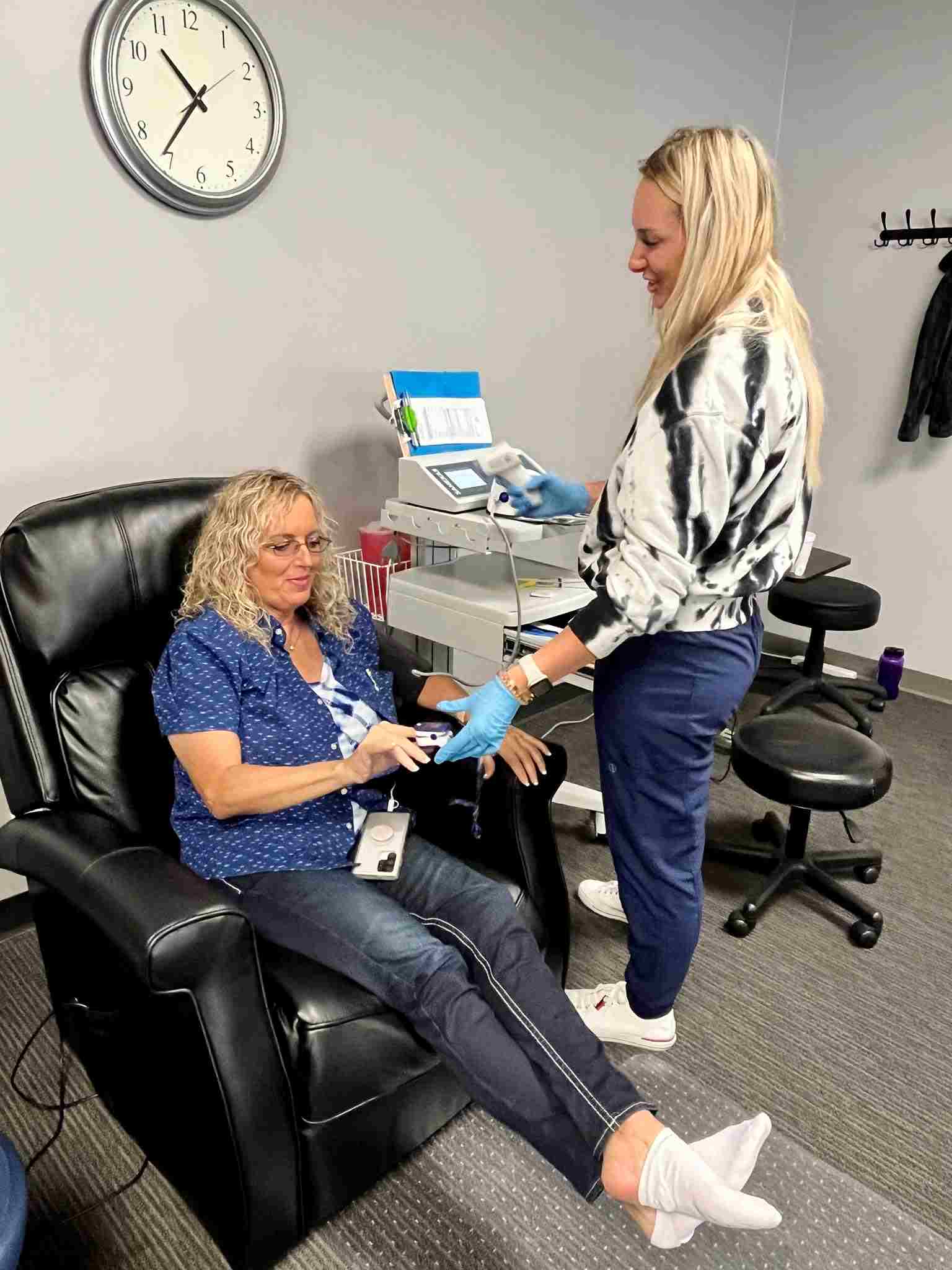Alternative Therapies for Joint Pain
Joint pain is a common affliction that affects millions of people worldwide, often leading to a decrease in quality of life due to discomfort and limited mobility. Best Joint Pain Treatment Centennial CO . While conventional medical treatments like medications and surgeries are widely used, many individuals are seeking alternative therapies for joint pain management. These therapies offer a more holistic approach, aiming to alleviate pain and improve joint function without the side effects often associated with pharmaceuticals.
One popular alternative therapy is acupuncture, an ancient practice rooted in Traditional Chinese Medicine. Acupuncture involves the insertion of thin needles into the skin at specific points on the body, believed to balance the bodys energy flow and promote natural healing. Many patients report significant pain relief and improved joint mobility after regular acupuncture sessions, making it a viable option for those seeking non-invasive treatment methods.
Another alternative therapy gaining traction is chiropractic care. Chiropractors focus on the alignment of the spine and joints, utilizing manual adjustments to relieve pain and improve function. By addressing misalignments, chiropractic care aims to reduce inflammation and enhance the bodys ability to heal itself. For individuals with joint pain, particularly in the back and neck, chiropractic treatment can be an effective way to restore mobility and reduce discomfort.
Herbal supplements and dietary changes are also considered beneficial for joint pain sufferers. Supplements such as glucosamine and chondroitin are believed to support joint health by aiding in the repair of cartilage and reducing inflammation. Additionally, incorporating anti-inflammatory foods, like omega-3 rich fish, nuts, and leafy greens, into ones diet can help manage pain and improve joint function over time.
Stem Cell Research Based Therapy Centennial CO
Physical therapy and exercise are crucial components of alternative joint pain management. Tailored exercise routines can enhance flexibility, strengthen muscles around the joints, and reduce stiffness. Physical therapists work with patients to develop personalized programs that cater to their specific needs, ensuring that exercise is both safe and effective.
Lastly, mind-body therapies such as yoga and tai chi offer a gentle yet powerful approach to managing joint pain. These practices emphasize controlled movements, breathing techniques, and mindfulness, which can help reduce stress and promote relaxation. Regular practice can lead to improved balance, flexibility, and overall well-being, making them excellent complementary therapies for those dealing with joint discomfort.

In conclusion, alternative therapies for joint pain provide a diverse range of options for individuals seeking to manage their symptoms naturally and holistically. By exploring treatments like acupuncture, chiropractic care, herbal supplements, physical therapy, and mind-body practices, patients can find relief and improve their quality of life. As always, it is essential for individuals to consult with healthcare professionals to create a comprehensive treatment plan tailored to their unique needs and conditions.
Role of Nutrition in Managing Joint Pain
Joint pain is a common ailment that affects millions of people worldwide, often stemming from conditions such as arthritis, injury, or general wear and tear. While medical treatments and physical therapies are common approaches to managing joint discomfort, the role of nutrition in alleviating joint pain is increasingly being recognized as an important factor. For those searching for joint pain treatment options near them, understanding the influence of diet on joint health can be an empowering step towards relief and improved quality of life.
Nutrition plays a critical role in managing inflammation, a key contributor to joint pain. Certain foods have been shown to possess anti-inflammatory properties, potentially reducing pain and swelling in the joints. Omega-3 fatty acids, commonly found in fish like salmon and sardines, are renowned for their ability to combat inflammation. Incorporating these into ones diet can help mitigate the inflammatory processes that exacerbate joint pain.
In addition to omega-3s, antioxidants are vital in protecting joints from oxidative stress, which can accelerate joint damage. Fruits and vegetables rich in vitamins C and E, such as berries, oranges, and spinach, can help neutralize free radicals in the body, thus protecting joint tissues. Our clinic makes centennial co stem cell healing for knees easier than trying to assemble furniture without instructions These nutrients support the maintenance of healthy cartilage, the cushioning material in joints, thereby reducing pain and stiffness.

Moreover, maintaining a healthy weight is crucial for joint health. Excess weight places additional stress on joints, particularly weight-bearing ones like the knees and hips. A balanced diet that is low in processed foods and sugars can help individuals manage their weight more effectively, easing the pressure on their joints and potentially alleviating pain.
In contrast, certain foods may exacerbate joint pain and should be consumed in moderation. These include foods high in purines, such as red meats and alcohol, which can increase uric acid levels and lead to conditions like gout. Processed foods, which often contain trans fats and refined sugars, can also contribute to inflammation and should be limited.
For those seeking joint pain treatment near them, consulting with a registered dietitian can be immensely beneficial. These professionals can tailor dietary plans to individual needs, ensuring that nutritional interventions complement other treatment modalities. Combining dietary changes with medical treatments and physical therapy can lead to a more comprehensive approach to managing joint pain.
In conclusion, while nutrition alone may not completely eliminate joint pain, it plays a significant role in mitigating inflammation, protecting joint health, and managing weight. By understanding and implementing these dietary principles, individuals can take an active role in managing their joint pain and enhancing their overall well-being. For those experiencing joint discomfort, exploring the nutritional aspect of treatment is an important step towards finding relief and improving quality of life.

Finding the Right Healthcare Provider
Finding the right healthcare provider for joint pain treatment can be a daunting task, especially when youre looking for someone nearby who can offer the relief you desperately need. Joint pain, whether due to arthritis, injury, or other conditions, can significantly impact your quality of life, making everyday activities challenging and sometimes unbearable. Therefore, choosing a healthcare provider who is knowledgeable, empathetic, and accessible is crucial to effectively managing your condition and improving your overall well-being.
The first step in this journey is understanding the specific needs related to your joint pain. This involves recognizing the symptoms, such as swelling, stiffness, or decreased range of motion, and considering how these symptoms affect your daily life. Equipped with this understanding, you can begin to research potential healthcare providers who specialize in joint pain treatment. Look for practitioners with a solid background in rheumatology, orthopedics, or pain management, as these specialties often deal directly with joint issues.
Proximity is also an important factor to consider. Finding a provider near you can make a significant difference in your treatment journey. Regular visits are often necessary for effective management of joint pain, whether it involves physical therapy sessions, follow-up consultations, or ongoing assessments. A nearby provider ensures that you can maintain consistency in your treatment plan without the added stress of long travel times.
When evaluating potential healthcare providers, its essential to consider their experience and reputation. Look for reviews and testimonials from other patients who have been treated for similar conditions. This feedback can offer valuable insights into the provider's expertise, bedside manner, and the effectiveness of their treatments. Additionally, consider reaching out to your primary care doctor or friends and family for recommendations, as personal referrals can often lead you to trusted professionals.
Once you have narrowed down your options, scheduling a consultation can be a pivotal step. During this initial meeting, you can assess the providers communication style, their willingness to listen to your concerns, and their proposed treatment plan. A good healthcare provider should not only offer a comprehensive approach to managing your joint pain but also involve you in the decision-making process, ensuring that the plan aligns with your personal health goals and lifestyle.
In conclusion, finding the right healthcare provider for joint pain treatment near you requires a balance of research, referrals, and personal interaction. By focusing on providers who specialize in joint pain, considering proximity for convenience, and evaluating their experience and patient feedback, you can make an informed decision. This careful selection process can lead to effective management of your joint pain, ultimately enhancing your quality of life and enabling you to engage more fully in the activities you love.
Evaluating Treatment Options: What to Consider
When faced with the challenge of joint pain, finding the right treatment can feel overwhelming. The journey often begins with a search for effective solutions nearby, but before settling on a treatment path, its crucial to evaluate the available options carefully.
Our clinic makes centennial co stem cell healing for knees easier than trying to assemble furniture without instructions
- Centennial CO Advanced Orthopedic Options
- PRP Knee Specialist Denver Tech Center
- Our clinic makes centennial co arthritis care specialist easier than trying to assemble furniture without instructions
First and foremost, understanding the underlying cause of the joint pain is essential. Joint pain can arise from a variety of conditions, including arthritis, bursitis, tendonitis, or even injury. Each of these conditions may require a different approach to treatment. Consulting with a healthcare professional who can accurately diagnose the cause of the joint pain is an important initial step. This ensures that the treatment plan is tailored to address the specific condition, rather than just alleviating symptoms temporarily.
Once the cause is identified, exploring the range of available treatment options becomes the next priority. These options can vary widely and may include medication, physical therapy, lifestyle modifications, or even surgical interventions. Evaluating these treatments involves considering their effectiveness, potential side effects, and how they fit into one's lifestyle. For example, physical therapy might be highly effective for some, but may require a significant time commitment. Similarly, medication can provide relief but might come with unwanted side effects.
Access and convenience are also critical factors to consider when evaluating treatment options. Finding treatment facilities or specialists nearby can greatly influence the decision-making process. Accessibility not only impacts the ease of attending appointments but can also affect the consistency and continuity of care. Additionally, considering the availability of resources such as support groups or community programs can provide additional layers of support during the treatment process.
Cost is another important consideration. Treatment expenses can vary significantly depending on the type of care required, the duration of treatment, and whether or not it is covered by insurance. Understanding the financial implications and exploring insurance coverage options can help in making an informed decision. It might also be beneficial to discuss payment plans or financial assistance programs with healthcare providers.
Finally, personal preferences and lifestyle should not be overlooked. Each individual has unique needs and preferences that can influence treatment choices. Some may prefer non-invasive methods, while others may be open to surgical options if they promise quicker relief and recovery. Its important to communicate these preferences to healthcare providers, as they can often tailor treatment plans to better align with personal goals and lifestyles.
In conclusion, evaluating treatment options for joint pain involves a comprehensive approach that takes into account the cause of the pain, available treatments, accessibility, cost, and personal preferences. By considering these factors, individuals can make informed decisions that not only address their joint pain effectively but also fit seamlessly into their lives. Engaging with healthcare professionals and seeking support from local resources can further enhance this decision-making process, leading to more positive and sustainable outcomes.
